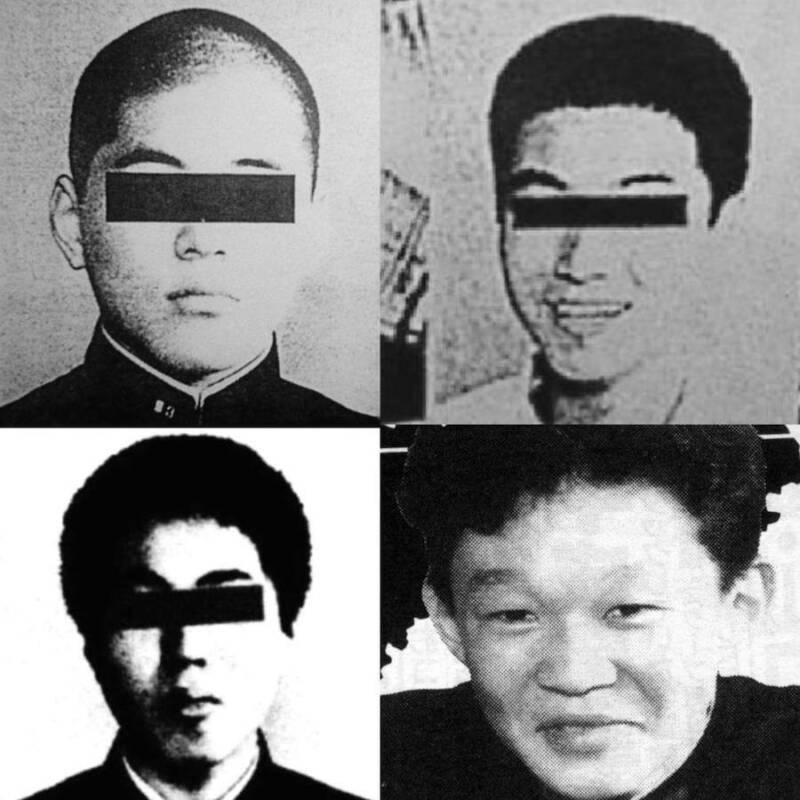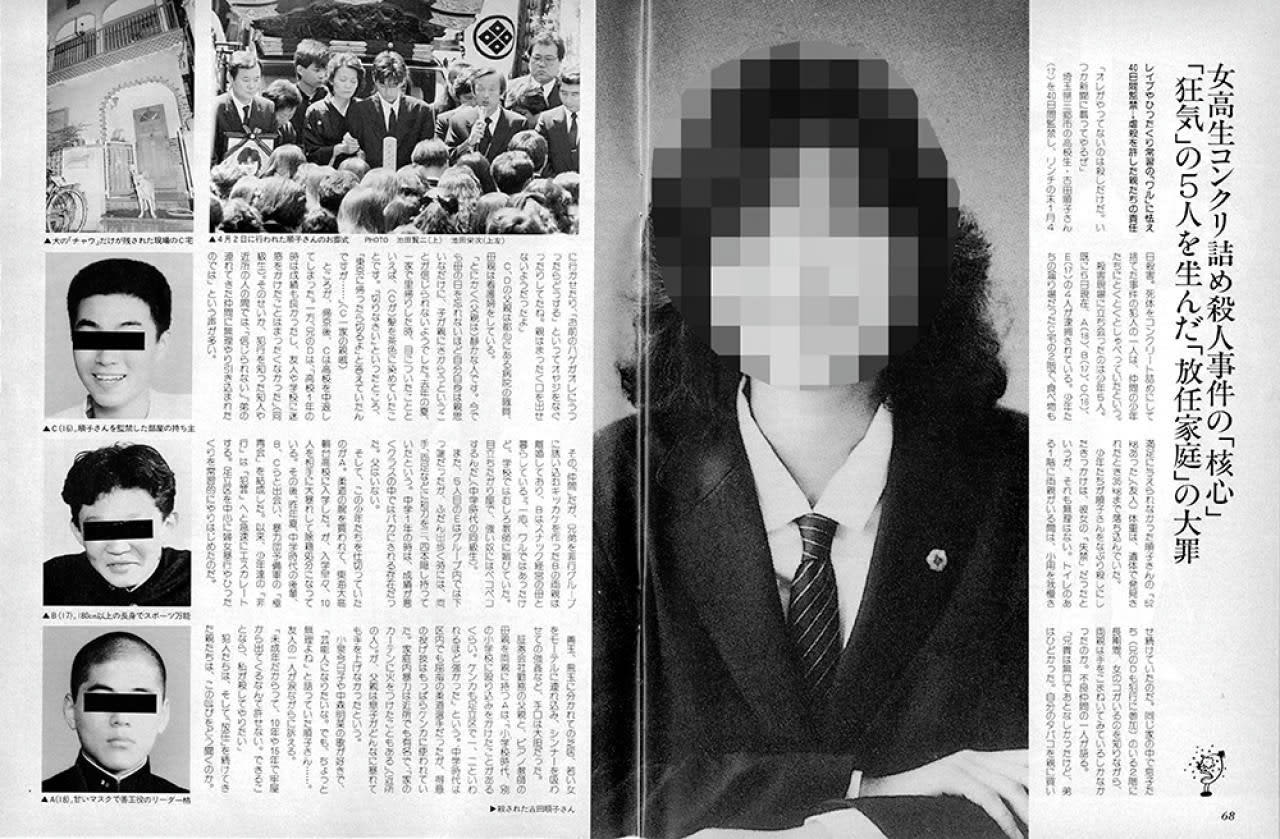Junko Furuta: The Gruesome Truth - A Shocking Case
Can a crime be so heinous, so utterly devoid of humanity, that it leaves an indelible scar on a nation's conscience? The case of Junko Furuta, a Japanese high school student abducted, brutally tortured, and murdered in 1988, is precisely that: a chilling testament to the darkest depths of human depravity.
On November 25, 1988, in Tokyo, a young woman's life was stolen, leaving behind a legacy of unimaginable suffering and unanswered questions. Junko Furuta, a typical Japanese high school student, became the victim of a horrific crime that continues to shock and horrify, even decades after it occurred. The details of her ordeal are not for the faint of heart, a stark reminder of the capacity for cruelty that resides within some individuals.
The perpetrators, four teenage boys, orchestrated a 40-day reign of terror, during which Furuta endured physical and sexual abuse of the most extreme kind. This wasn't a crime of passion, or a fleeting moment of violence; it was a sustained act of cruelty, a prolonged period of torment that defies comprehension. The house in the Ayase district of Adachi, Tokyo, where she was held, became a prison, and the perpetrators, her captors, turned her life into a living hell.
The world was left to grapple with the appalling reality of what had transpired, and to come to terms with the fact that such an atrocity could occur. The case has attracted global attention, not only for the brutality of the crime but also for the young age of the victim and the perpetrators involved. The legal ramifications were also of interest, raising concerns about the treatment of juvenile offenders. Moreover, the case has had a lasting impact, prompting discussions on juvenile crime, the role of the police, and the darkest aspects of human nature. The case has left an indelible mark, highlighting the darkest corners of humanity and the terrifying.
| Attribute | Details |
|---|---|
| Full Name | Junko Furuta |
| Date of Birth | January 18, 1971 |
| Place of Birth | Misato, Saitama Prefecture, Japan |
| Education | High School Student |
| Date of Kidnapping | November 25, 1988 |
| Duration of Captivity | 40 days (November 25, 1988 - January 4, 1989) |
| Place of Captivity | House in the Ayase district of Adachi, Tokyo |
| Perpetrators | Hiroshi Miyano, Shinji Minato, Jo Ogura, Yasushi Watanabe |
| Date of Death | January 4, 1989 |
| Cause of Death | Severe abuse and torture |
| Legal Outcomes for Perpetrators | Surprisingly lenient sentences due to their minor status |
| Notable Points | The case highlights the failure of the authorities and the horrific nature of the crime |
| Legacy | A chilling reminder of the darkest depths of human depravity and the importance of protecting vulnerable individuals |
| Relevant website | Wikipedia |
The brutality inflicted upon Junko Furuta was extensive. The perpetrators subjected the teenage girl to extreme physical abuse. She was repeatedly raped and tortured over a period of 40 days. Her ordeal was a harrowing series of events that left deep scars. The crime was finally exposed after Miyano and Ogura were arrested for another rape. During a police interview, one of the killers mistakenly confessed. The nature of the crime, and the details, have sent shockwaves across the globe.
The events surrounding Junko Furuta's abduction and subsequent murder are shrouded in a mixture of horror and disbelief. On November 25, 1988, the unsuspecting high school student was kidnapped by four male teenagers: Hiroshi Miyano, Shinji Minato, Jo Ogura, and Yasushi Watanabe. These individuals, who were all young at the time, would become the architects of a prolonged and horrifying ordeal that would ultimately claim her life. The boys took Junko Furuta to a house owned by one of the kidnappers' parents, located in the Ayase district of Adachi, Tokyo. The house became a prison where Furuta's suffering began.
For forty agonizing days, Junko Furuta was subjected to unimaginable cruelty. She was repeatedly raped, tortured, and abused. The perpetrators, fueled by a twisted sense of power and sadism, inflicted a level of suffering that is difficult to comprehend. Despite the severity of their crimes, the perpetrators received surprisingly lenient sentences. The leniency was primarily due to their minor status at the time of the offense and, allegedly, expressions of remorse. This resulted in widespread outrage and a public debate regarding the justice system's handling of juvenile crimes.
The trial itself began on July 31, 1989, in Tokyo. The legal proceedings, and the revelations that came out of them, further exposed the disturbing nature of the case. The details of the abuse, and the extent of the torture, shocked the nation and the world. Under Japans juvenile law, the sentences handed down were seen by many as inadequate, given the severity of the crimes committed. The case stands as one of Japan's most shocking and tragic criminal incidents, drawing attention worldwide for its brutality and the young age of the victim involved.
The trial and prosecution also brought the classmates of Furuta Junko to the forefront, as they wept for their friend at her funeral. The case has left an indelible mark, highlighting the darkest corners of humanity and the terrifying depths to which individuals can sink. The heinous nature of the crime became a focal point of societal discussion, prompting scrutiny into the legal and social factors that facilitated this terrible event. The details of the crime were meticulously exposed in the trial, which painted a horrifying picture of the extent of the abuse inflicted upon Furuta.
The details of the crime are particularly shocking. The perpetrators' actions reflect a profound lack of empathy and disregard for human life. It is a case that has elicited a complex range of reactions, from outrage and anger to profound sadness and a sense of loss. The tragic circumstances of her death, the prolonged suffering she endured, and the subsequent legal proceedings have made this case a point of discussion in criminal justice circles and in social commentary. The ordeal she suffered is a reminder of the darkest aspects of human behavior. The fact that the crime could have potentially been prevented underscores the complexities surrounding the case.
The murder was finally discovered by accident. During a police interview, one of the killers, confused by the line of questioning, mistakenly concluded that the officer knew about the Furuta murder. This led to his confession, which ultimately exposed the horrific details of what had happened. The confession came as a surprise since the police were working on another case of a woman and her son who had gone missing a few days before Junko's abduction. The investigation had hit a dead end, but the accidental confession gave the police new insights into the crimes that were committed.
In 2018, one of the convicts in the Junko Furuta case, Minato, who now goes by the name Shinji Minato, allegedly assaulted a company employee. He used a metal baton to beat him in the right shoulder. This event raised fresh questions about the perpetrators and the lasting impact of the crimes committed. The fact that a convicted criminal would again be involved in violence is a stark reminder of the complexities and challenges associated with rehabilitation and justice. It also served as a painful reminder of the case that continues to haunt the public.
The case's notoriety has led to its portrayal in popular culture. In 2004, a feature film, "Concrete," was based on the Junko Furuta murder case. The film served as a dramatization of the events, sparking renewed interest in the case and bringing the horrors to a new generation. The portrayal in film has led to a deeper understanding of the social aspects involved in the crime. The film highlighted many of the details about the crimes committed, which further shocked the public. The depiction of the events also triggered a debate regarding the depiction of violence in films.
Many Japanese citizens who are aware of this case know it by (). This translated to 'Girl High School Student Concrete-Filled Murder Case.' The name itself suggests the brutal nature of the crime. The case's impact on society continues, drawing attention worldwide for its brutality and the young age of the victim involved. The case of Junko Furuta and Yuna were both victims of highly publicized cases of extreme abuse and torture in Japan and Korea, respectively. Junko Furuta's case involved over 100 people who were aware of her captivity and suffering but did not intervene. Yuna's case also saw bystanders and authorities failing to act despite being aware of her abuse.
The Hello Kitty murder case (chinese: Hello kitty cong4 si1 ngon3; Hello kitty chng s\u012b ngon; 'hello kitty hidden body case') took place in Hong Kong in the spring of 1999, when a nightclub hostess was abducted in Lai Yiu Estate, tortured and raped in an apartment in Tsim Sha Tsui, Kowloon, after stealing a wallet owned by one of her acquaintances. Her body was later found encased in concrete inside a drum in Kt, Tokyo. The details of the Hello Kitty case demonstrate an extraordinary resemblance to the case of Junko Furuta. The brutality of the crime, and the way the body was disposed of, sparked a public outrage.
The case serves as a stark reminder of the fragility of life and the importance of protecting the most vulnerable members of society. The fact that the police failed to intervene despite being alerted to Furuta's condition is another tragic aspect of the case. The failure to act, on two separate occasions, underscores the shortcomings of the systems in place. The failure to intervene has resulted in much debate among the public. The case serves as a reminder of the need for vigilance, and the importance of acting when you suspect that someone is in danger.
The case remains a somber lesson about the darker aspects of humanity and the enduring power of evil. The fact that the perpetrators received lenient sentences, due to their minor status, is a contentious aspect of the case. This has triggered a debate surrounding the juvenile justice system and the extent to which young offenders should be held accountable for their actions. The case has caused much controversy among legal experts and members of the public alike. It has led to calls for reforms and prompted deeper examination of the legal and societal factors that contributed to such a tragedy.
The crime has left an indelible mark, highlighting the darkest corners of humanity and the terrifying depths to which individuals can sink. It is a real story that can leave you shattered, but it also underscores the importance of empathy, compassion, and the need to stand up against injustice. The legacy of Junko Furuta's murder should serve as a constant reminder of the need to protect the vulnerable and to confront the evils that exist in our world.
Article Recommendations
- Emily Compagno From Divorce To New Love A Story Of Resilience
- Inside Latest On Alice Rosenblum News Leaks Updates



Detail Author:
- Name : Elfrieda Powlowski
- Username : eli.schmidt
- Email : olson.antonetta@hotmail.com
- Birthdate : 1999-07-23
- Address : 601 Aric Union South Velmaville, NH 79476-3456
- Phone : 1-863-625-9582
- Company : Mitchell PLC
- Job : Photographic Processing Machine Operator
- Bio : Praesentium repellat sapiente et itaque. Quae doloribus libero ducimus sint qui quidem. Accusantium aut quaerat quidem dicta et soluta at.
Socials
instagram:
- url : https://instagram.com/khauck
- username : khauck
- bio : Ea qui optio fuga vero. Id ut voluptatem aperiam dolor at atque.
- followers : 1858
- following : 217
twitter:
- url : https://twitter.com/khauck
- username : khauck
- bio : Inventore officia quo facere. Dolores aspernatur est alias enim fugit error.
- followers : 548
- following : 2347
tiktok:
- url : https://tiktok.com/@karine_official
- username : karine_official
- bio : Earum nihil ea consequatur at. Eaque eos et mollitia commodi.
- followers : 2972
- following : 1916
facebook:
- url : https://facebook.com/khauck
- username : khauck
- bio : Velit magni laboriosam ut dolorum enim quam.
- followers : 2977
- following : 1862
linkedin:
- url : https://linkedin.com/in/karine.hauck
- username : karine.hauck
- bio : Velit quo voluptatum officia eum illum tempora.
- followers : 2673
- following : 369